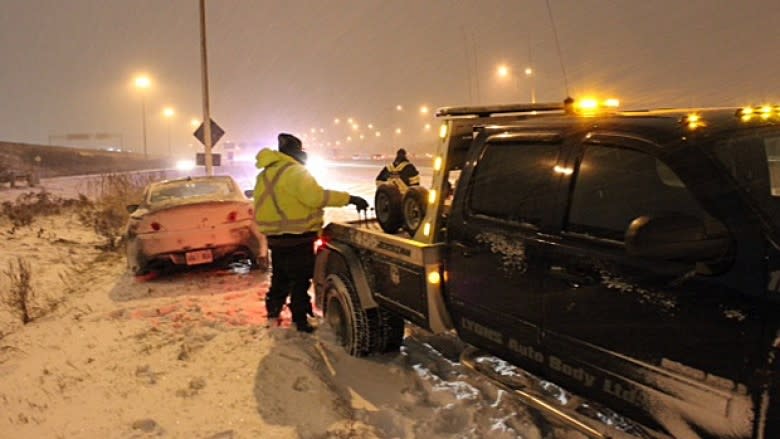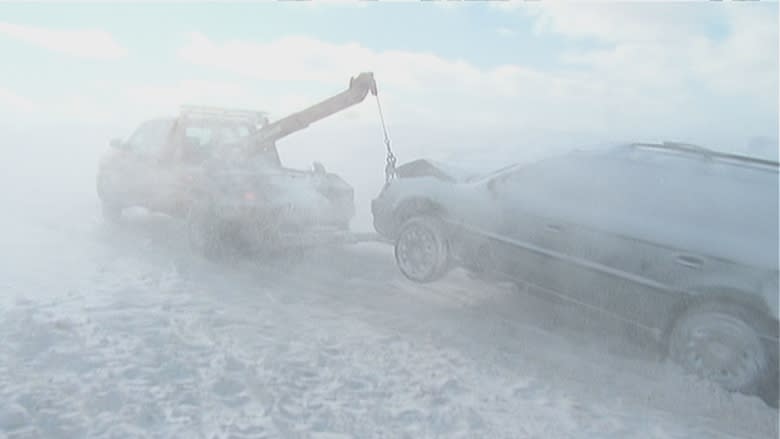'Slow down': AMA urges caution after string of close calls with tow trucks
It's been nine years since Brandon Klassen was behind the wheel of a tow truck, but he still remembers the squeal of tires and sickening thud as a gravel truck hit the ditch.
He was jacking up a car on the shoulder of Whitemud Drive when a speeding gravel rig swerved wildly to avoid hitting him on the shoulder of the freeway.
"He didn't see us and ended up having to lock up his brakes, and he hit the ditch and ended up beside my tow truck in the ditch," Klassen recalled in an interview with CBC Radio's Edmonton AM. "It was pretty scary.
"I didn't say anything to him because I was just furious and to be honest with you, he continued to talk on his cell phone as he hit the ditch."
The crash was one of many close calls during Klassen's six years as a tow truck operator with the Alberta Motor Association.
Klassen is still with AMA, now as a network adviser and spokesperson. This week he has been reminding drivers to exercise caution around service vehicles, after some close calls with tow trucks around the province.
- In late December in north Edmonton, a speeding van hit some ice and ricocheted off the back of one of AMA's tow truck..
- On Saturday outside Grande Prairie, a driver slammed into the back of a vehicle as it was being loaded onto the deck of a tow truck. The tow truck operator was taken to hospital as a precaution.
- This week in Ponoka, a tow truck was sideswiped by another vehicle as the operator was helping a stranded motorist.
"In those instances, no one was hurt, thankfully," Klassen said. "But it's one of those things with education, we need to keep reminding motorists to slow down."
'The sound is scary'
As winter conditions bring black ice and slush to the streets, people need to be more careful than ever, he said.
Tow truck operators and other service vehicle drivers put their lives at risk every day, he said.
"You almost needed more than one set of eyes," Klassen said of his own experience. "You have to be hooking the vehicle up and make sure the person that you're rescuing is safe as well."
Rescuing motorists stranded on the shoulder of streets and highways — while traffic speeds past — leaves operators dangerously exposed every time they step out of their vehicles.
"It's like no other feeling, the wind that goes by you at 60 kilometres an hour," Klassen said.
"You always had to be looking at traffic while doing your job."
Slow down to 60 km/h
The law requires drivers to slow to 60 km/h or the posted speed, whichever is lower, when passing stopped emergency vehicles and tow trucks with their lights flashing.
This applies to the lane immediately next to the stopped emergency vehicles. If possible, drivers should move over a lane when possible. The fine for speeding in these areas is doubled.
Klassen said drivers seem to have a difficult time obeying the law.
"I think you just assume that drivers will follow the rules and slow down when they see someone on the side of the road working — whether it's tow truck, ambulance or fire truck — but it just doesn't happen."
Listen to Edmonton AM with host Mark Connolly, weekday mornings at CBC Radio One, 93.9 FM in Edmonton. Follow the morning crew on Twitter @EdmAMCBC.



